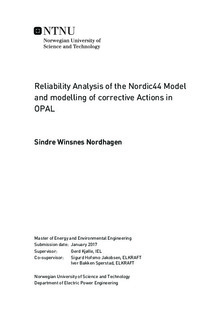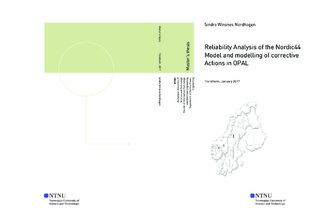| dc.description.abstract | The power systems primary function is to supply electrical energy to costumers in a cost-effective way with satisfactory quality and continuity. Today's society is demanding continuously available electrical energy, which pushes the power system towards its limit. Continuous availability is not possible to accomplish, as the power system will experience component failures outside the control of the operators. As a result, the system designers, planners and operators will be fronted with a dilemma; how to best invest their money to operate the system within economic, reliability and operational constraints.
This thesis will look into the reliability analysis of power systems; an analysis which uses probabilistic techniques to evaluate the severity of a state of which the power system might exist. Thus obtaining a prediction of the power systems likely future behavior, which can point out unreliable parts of the system where investments are needed. In this thesis a reliability assessment of the Nordic44 model is implemented, which is an aggregated model of the Nordic power system. The reliability analysis is carried out using the OPAL methodology, developed at SINTEF Energy Research. The methodology consists of a consequence analysis where the severity of different system states is assessed, pursued by the accumulation of reliability indices, which can be used in decision-making processes for long-term planning purposes. The results revealed that the Nordic44 model was an unreliable model, with several issues providing adequate supply.
In the consequence analysis, the system operators may apply different strategies, as to minimize customers load shedding. These strategies can be disconnection of transmission lines, generator rescheduling or reactive compensation. Correct modelling of these strategies is important in the methodology used, and they should be implemented as close to the corrective actions used in real power system operation. This thesis will further develop the corrective action by reactive compensation. Finally, the benefits of activating different corrective action options in the consequence analysis will be considered for the Nordic44 model under different system states, and their performance will be compared to foregoing studies. Results affirmed the corrective actions applicability for larger power systems, and that reactive compensation is beneficial for adequate supply when assessing reliability of the Nordic44. | |

